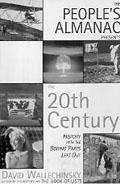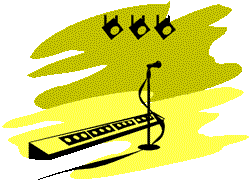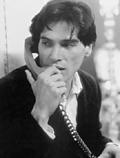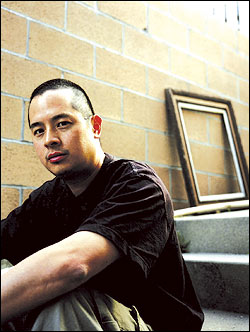Though the 1960s ended the way every decade ends, at the stroke of midnight on New Year’s Eve, the cultural legacy of the ’60s as an epoch lingered well into the ensuing decade. For as much as has been written about the ’70s being the Me Decade, it was also the People’s Decade: an era that—for a while, anyway—attempted to put the ideals of the ’60s into action. One such ideal was that the press was, or should be, by and for the masses—and that it should tell the whole story, not simply the airbrushed version. Implicit in this was the belief, especially relevant in the wake of both Vietnam and Watergate, that any given story had more to it than meets the eye and that the powers that be weren’t necessarily trustworthy. This attitude motivated the alternative press and also found its way into more mainstream arenas, such as the Washington Post, whose Watergate coverage fulfilled the ultimate muckraker’s fantasy by forcing the resignation of a crooked head of state.
The People’s Almanac Presents the 20th Century: History With the Boring Parts Left Out edited by David Wallechinsky (Overlook Press, $29.95)
Given this milieu, the publication of something like The People’s Almanac was all but inevitable. Edited by novelist Irving Wallace and his son David Wallechinsky, the coauthor of Whatever Happened to the Class of ’65?, The People’s Almanac intended to be, as their introduction put it, “An informative book that is meant to provide entertainment . . . occasionally lifting up a few historic rocks to see what crawls beneath.” A mini-encyclopedia that combined the fanciful (“People Who Never Were—Yet Live Today,” biographical sketches of Batman, Sherlock Holmes, and Scrooge McDuck), and the hugely important (“US Presidents,” biographical sketches of FDR, JFK, and Nixon), it was heavily informed by the very ’60s idea of getting beneath the story, of spotlighting the things you weren’t supposed to; those presidential outlines, for instance, came with “Psychohistories” and lists of “Little Known Facts.” More importantly, it dissolved the line between high- and lowbrow—not unheard of in art, but fairly revolutionary for a reference work.
The recent publication of Wallechinsky’s The People’s Almanac Presents the 20th Century is something of a boon for fans of the original book and its 1978 sequel, The People’s Almanac #2, both of which have been out of print for years. Ostentatious moniker aside, The 20th Century is little more than a compilation of many of the best bits of the original almanacs, updated and with a handful of newer items sprinkled on top. This is misleading but by no means bad; 24 years on, it still proves compulsively readable. But where the book’s approach was once revolutionary, it now appears somewhat quaint—thanks, in large part, to the impact of Wallechinsky’s initial forays into the territory. Once he’d transfigured the idea of what a reference book could do, others proceeded to trivialize it.
The Almanacs begat the even more successful Book of Lists and its numerous sequels, The Book of Predictions, and The Intimate Sex Lives of Famous People. The enlightened goals of the Almanac dynasty (which also included several other family members) devolved decisively over time. The Book of Lists stands alone on its straightforward appeal; the latter two, however, sink to the level of kitsch and tawdriness, respectively.
Still, this makes perfect sense: If the ’70s were the People’s Decade, the ’80s were the Trivia Decade, as evidenced by everything from Trivial Pursuit to MTV to the rise of mainstream tabloid journalism—Lifestyles of the Rich and Famous, for instance, bore more than a superficial conceptual resemblance to the Almanac family’s low point. The People’s Almanac links the 1960s with the ’80s; as a legacy, it’s a crucial if disappointing one. If The 20th Century tells us anything, though, it’s how successful Wallechinsky et al. commingled information and entertainment before stooping to the level of its bastard stepchild: infotainment.*
Briefly noted
Taken individually, Douglas Coupland’s novels zoom in on the zeitgeist and subvert the perceptions that most observers skim off the top of each day’s trends. An expert chronicler, Coupland found culture in the mundane conversations of aimless youths in Generation X and the geeky meanderings of a nouveau niche in Microserfs.
Miss Wyoming by Douglas Coupland (Pantheon, $23)
His five previous books of fiction have flailed at the literary boundaries and threatened to leave readers mildly entertained—but nothing more. In his latest, Miss Wyoming, the Vancouver author veers even further off the track, assembling a character study that frequently requires such a suspension of disbelief that one may as well watch a televised wrestling match.
Former child beauty queen and teen TV star Susan Colgate, who Coupland sets up as a sort of “What would’ve happened to JonBenet had she not been, well, you know. . . ?” protagonist, miraculously walks away from a plane crash that kills 194 others. Dazed but not entirely confused, the 25-year-old seizes the opportunity to let all those Hollywood vultures—and her overbearing mother—think she’s dead. Meanwhile, John Johnson—an aging director who’s lost his hotshot status—also has a near-death experience, during which he mistakes a commercial starring Susan Colgate for a divine vision.
Susan and John’s lives entwine during their separate soul searches, and to Coupland’s credit, their relationship teeters fascinatingly between romance and outrageousness. This balancing act—or the apathy toward which will displace the other—is one of Coupland’s central themes, but one that gets bogged down among frequent references to tabloid creatures and dated sitcoms. Not at his sharpest, Coupland trips over his favorite device: instant nostalgia.
RICHARD A. MARTIN
Douglas Coupland will read at Elliott Bay Book Co., January 29 at 7:30.








